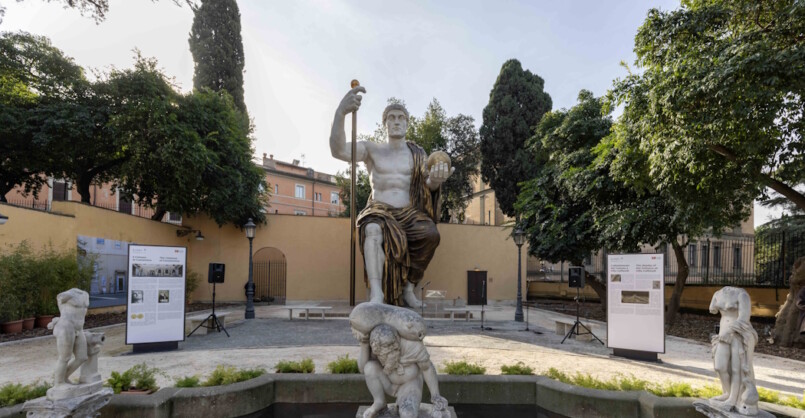Tuesday 23 April 2024 11:04
The statue reborn: Emperor Constantine returns to Rome
Whether you’ve visited Rome’s Capitoline Hill before or this is the first time you’ve climbed its steps, you probably already know its history, that civilizations were established here long before the city was founded, and that temples lie beneath the buildings Michelangelo imagined when he redesigned the space on the hill. Making sense of […]
read the news on From Home to Rome

Whether you’ve visited Rome’s Capitoline Hill before or this is the first time you’ve climbed its steps, you probably already know its history, that civilizations were established here long before the city was founded, and that temples lie beneath the buildings Michelangelo imagined when he redesigned the space on the hill. Making sense of the many layers of history still found in the gardens and caves of this hill is the work of archaeologists, who are now actively using technology to bring their studies closer to the general public.
If you’ve read through the posts on this blog already, you’ll also remember how the Capitoline Museums have expanded to include the magnificent Villa Caffarelli, also on the hill, as an additional branch (see
this
).How do the worlds of technology and museums come together on the Capitoline Hill? At the very entrance to Villa Caffarelli is now the (temporary) home of a colossal reconstruction of Emperor Constantine’s most famous statue. Only a few fragments survived the destruction of the original statue at the end of the Empire – they can be seen in the Capitoline Museums – so experts used them to scale to map and build a faithful reconstruction using the same technology as 3D printers. This “new” statue, which stands about 13 meters (or more than 42 feet) tall and can be freely admired and photographed, was known as “the Colossus”. To avoid any confusion, “colossus” was the name given to any large statue, and as such, a very famous colossus of the Emperor Nero was the reason for the nickname given to the Flavian Amphitheater: the Colosseum!
The use of 3D printing is not the first application of new technologies in the context of archaeology in Rome. 3D surveying and VR headsets have been successfully used for virtual visits to the Circus Maximus, the Baths of Caracalla or the Domus Aurea, as well as to launch new programs such as
the Virtual Reality Bus
.The choice to place the reconstructed statue on the Capitoline Hill is not accidental. The garden of the Villa Caffarelli, where the reproduction of the Colossus of Constantine was placed, partially occupies the area of the Temple of Jupiter Optimus Maximus, which was once dominated by a colossal statue of the god Jupiter. This very statue was remodeled to fit the head of the Emperor Constatine, and now the placement of the reconstructed work of art here is like bringing the Emperor “back home”.
The statue will be on display in the garden of Villa Caffarelli until December 31, 2025. Do not miss the chance to see this extraordinary fusion of archaeology and technology live! This is a unique opportunity to admire the greatness of the Emperor Constantine as he must have appeared in his original integrity.
